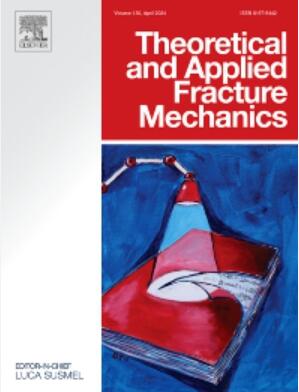压痕缺陷对焊缝和母材疲劳裂纹扩展行为的影响:原位疲劳研究
IF 5.6
2区 工程技术
Q1 ENGINEERING, MECHANICAL
引用次数: 0
摘要
连续油管运输和作业过程中产生的表面压痕缺陷对疲劳失效机制有重要影响,但其微观组织相互作用动力学特征仍然很差。通过原位疲劳测试和电子后向散射衍射(EBSD)表征,本研究系统地研究了压痕诱导的显微组织修饰如何影响母材(BM)和焊缝区(WZ)材料的裂纹扩展行为。结果表明,压痕在BM和WZ中产生了截然不同的微观结构响应,从而决定了它们的裂纹扩展机制。在压痕塑性影响区,BM压痕挤压过程中不规则晶粒相互嵌套形成的互锁篮织结构被破坏,导致晶界处出现大量应力集中,加速主裂纹扩展。相反,由于压痕引起的位错密度均匀化以及晶粒和晶界强度的一定提高,WZ有效地增强了抗裂纹形成和扩展的能力。在不受压痕影响的区域,BM和WZ的显微组织都恢复了原来的性能。在BM中,不同尺寸和形状的铁氧体,以及少量的珠光体,错综复杂地嵌套和交织在一起。该结构具有良好的协调变形能力,有效地延缓了裂纹扩展。相反,在WZ内,铁素体晶粒更大、更独立,导致晶间变形相容性降低。这种结构特征通过强烈的滑移带形成促进了局部应变集中,从而加速了主裂纹的扩展。本文章由计算机程序翻译,如有差异,请以英文原文为准。
Effect of indentation defects on fatigue crack propagation behavior of weld and base material: An in-situ fatigue study
Surface indentation defects generated during coiled tubing (CT) transportation and operation critically influence fatigue failure mechanisms, yet their microstructural interaction dynamics remain poorly characterized. Through in-situ fatigue testing coupled with electron backscattering diffraction (EBSD) characterization, this work systematically examines how indentation-induced microstructural modifications govern crack propagation behaviors in base metal (BM) and weld zone (WZ) materials. The results show that indentation generates fundamentally distinct microstructural responses in BM and WZ, subsequently dictating their crack progression mechanisms. In the plastic influence zone of the indentation, the interlocking basket weave structure formed by irregular grains nested in each other during the pressing process of BM indentation was damaged, resulting in a large amount of stress concentration at the grain boundary, accelerating the main crack propagation. Conversely, WZ develops enhanced resistance to crack formation and propagation effectively due to indentation-induced homogenization of dislocation density and a certain increase in grain and grain boundary strength. In the non-affected zone of indentation, the microstructures of both the BM and the WZ restored their original properties. In the BM, ferrite with varying sizes and shapes, along with a small amount of pearlite, were intricately nested and interwoven. This structure exhibited superior coordination deformation capability, effectively delaying crack propagation. In contrast, within the WZ, ferrite grains were larger and more independent, leading to diminished intergranular deformation compatibility. This structural characteristic facilitated localized strain concentration through intensive slip band formation, which subsequently accelerated the propagation of main cracks.
求助全文
通过发布文献求助,成功后即可免费获取论文全文。
去求助
来源期刊

Theoretical and Applied Fracture Mechanics
工程技术-工程:机械
CiteScore
8.40
自引率
18.90%
发文量
435
审稿时长
37 days
期刊介绍:
Theoretical and Applied Fracture Mechanics'' aims & scopes have been re-designed to cover both the theoretical, applied, and numerical aspects associated with those cracking related phenomena taking place, at a micro-, meso-, and macroscopic level, in materials/components/structures of any kind.
The journal aims to cover the cracking/mechanical behaviour of materials/components/structures in those situations involving both time-independent and time-dependent system of external forces/moments (such as, for instance, quasi-static, impulsive, impact, blasting, creep, contact, and fatigue loading). Since, under the above circumstances, the mechanical behaviour of cracked materials/components/structures is also affected by the environmental conditions, the journal would consider also those theoretical/experimental research works investigating the effect of external variables such as, for instance, the effect of corrosive environments as well as of high/low-temperature.
 求助内容:
求助内容: 应助结果提醒方式:
应助结果提醒方式:


